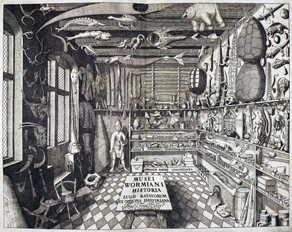Chris Wild, the self-styled Retronaut, visited RunCoCo in Oxford. This meeting has taken almost 6 months to arrange as for a number of (sometimes comedic) reasons all our previous engagements have fallen through.
Today, Chris gave us an insight into The Retroscope, his visual time-machine. Currently in development, we were shown a mock-up of a steampunk (actually more 1950s-1960s nuclear punk) user-interface to view collections of images. (As an aside I’m not convinced by the stylised interface winning over cross-generations of community collection participants. Think of the interior of a nuclear submarine or the interior of the Doctor Who Tardis of William Hartnell or Patrick Troughton. However you cannot doubt Chris’ commitment to this vision.) For community collections (as well as for commercial companies) this time-machine could be an online way of collecting and displaying images, footage and audio – with amazing tools for visualising a locality through time, or a subject like an individual or an artefact through time. When it is developed (maybe within the next 12 months) it will be free-to-use, with revenue streams organised around activities. Registration will be ‘invisible’, and cloud services will be used for storage etc. Think Flickr but specifically for the past. Note – the ‘past’ not history.
I think of the past as an index of creative possibility.
Chris Wild
We discussed a wide range of issues, including the obligation of the cultural heritage sector to offer an appropriate souvenir/memory of the vistor’s experience – we were talking about the museum shop, but actually I think the concept of the souvenir, or at least something to remember the experience by should be part of the community collection experience. We also discussed that sector’s inherent resistance to opening up their collections, or to open their activities up to non-experts. This may be driven by fear and the desire to maintain who they were. But changes are beginning to happen with community collection initiatives, with the Commons and Flickr, and the online landscape may change radically – as it has done for the music industry. Community collections can work, if all participants are involved from the outset and understand what is expected of them, and what the purpose is. However – quite rightly – the professionals need reassurances around trust/authenticity, and maybe they also need to know that they are still the ‘expert!’
Chris brings a refreshing breeze of the ‘can-do’ entrepreneur into the issues surrounding the sustainability of community projects in the cultural heritage sector. The Retroscope embiggens the uniqueness of the community. Sustainability may come from the reason the user visits that community is to see something they cannot get anywhere else. For museums of now, his vision is more ‘the wonder room’ or the ‘cabinet of curiosities’ rather than the old cliche of the museum as a book on a wall. Whenever I hear ‘cabinet of curiosities’ I think of the wonderful Pitt Rivers Museum in Oxford, you can get an online taster with their virtual tour.
Anyone who can introduce the deluded wisdom of Count Arthur Strong in to a business meeting has got to be listened to, at least for a moment in time! Thank you Chris for a fascinating morning!
Image credit:”Musei Wormiani Historia”, the frontispiece from the Museum Wormianum depicting Ole Worm’s cabinet of curiosities, from Wikimedia Commons; Nannini Cruser Goggles from The Retronaut.

